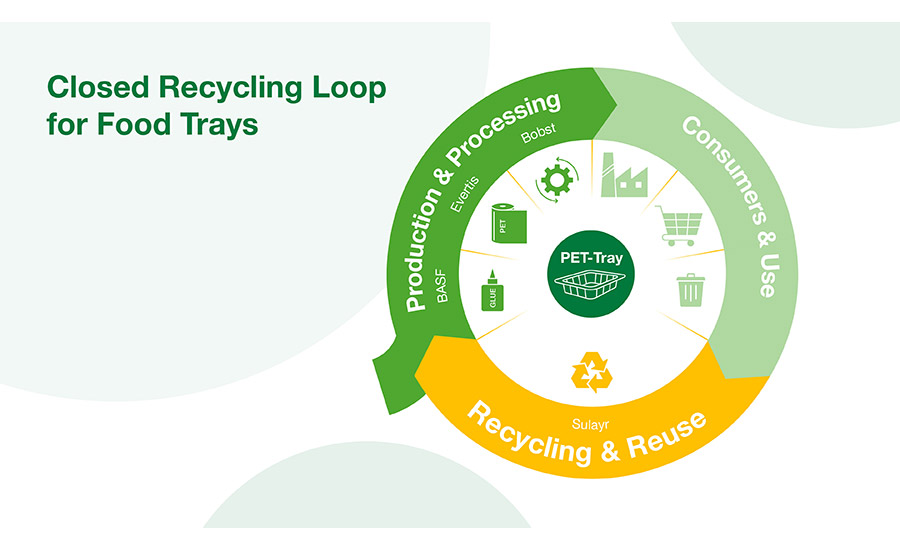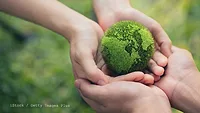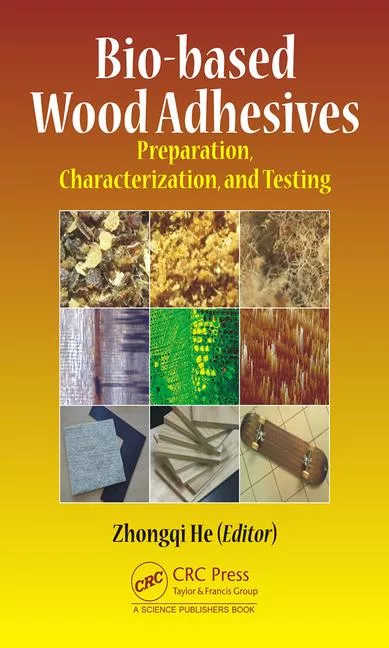Closed-Loop Model Enables Recycling of PET-Based Multilayer Packaging
This article presents a best-practice example of a closed recycling loop for PET-based multilayer. Four partners have collaborated on a new recycling approach.

Image courtesy of Maxxa_Satori via gettyimages.com.
Multilayer packaging based on polyethylene terephthalate (PET) can have a bright and sustainable future. This is the message of the strategic partnership of four technology companies, whose closed-loop recycling model is sparking new discussions around the role PET-based multilayer will play in tomorrow’s packaging industry.
Collaboration: Key to Success
The European Green Deal requires all packaging to be reusable or recyclable by 2030–a regulation that is perceived as particularly challenging for multilayer packaging, since its layers first need to be separated before entering recycling streams. However, that perception could be about to change. Sulayr, a recycling company operating in Europe, has successfully commercialized a multilayer recycling process that achieves “closed-loop” status and enables PET to be reused with virtually zero waste. With this, a circular economy practice for PET-containing packaging materials already exists, but this process can be improved and become more practical and effective if the whole value chain works together with the target to make the separation of the layers easier.
Industrial adhesives specialist BASF, packaging machinery OEM Bobst, and films expert Evertis are supporting Sulayr in this endeavor. Together, the companies form a strategic partnership combining expertise from across the entire packaging value chain. Their collaborative contributions are key to the success of this recycling process and its potential for adoption at a bigger scale.
At the core of the process is a multilayer film produced by Evertis, comprising PET and polyethylene (PE) layers, laminated with a BASF water-based adhesive, and processed with a Bobst coater. Multilayer films are used for various packaging materials; after use, the waste is delivered to sorting facilities. Sulayr can use the so-called waste as raw material, ensuring a closed-loop. The company separates the multilayers and makes the PET available for re-use, with recycled PET delivered to Evertis and other film producers who then restart the cycle.
This is seen as an important step towards universal recycling of PET, enabling its continued use in a Green Deal-compliant packaging economy. The process can apply to post-consumer and post-industrial waste – meaning it has potential to transform the entire PET-based packaging use model.
Sulayr has been able to separate different types of multilayers since 2009, but the speed and cost-effectiveness of the process depends on the debonding of the films. Miguel Ángel Arena, CEO of Sulayr, said, “Our technologies enable us to delaminate most types of PET-containing multilayers and bring the recycled PET back to the industry. However, we see a difference in the trays coming from the post-use phase to our facility. With BASF’s water-based Epotal adhesives for example, our separation process is simplified, because the adhesive allows a quick and easy separation with a high quality of the recyclates, which is not the case with solvent-based adhesives for example. We are sure that a streamlined process can help scale up the recyclability of PET-based multilayers, giving the packaging industry a new way to meet its sustainability challenges.”

Image courtesy of BASF.
Technology Matches the Process
One way to optimize the recycling process is to produce all PET/PE trays under specific conditions that facilitate easy separation. This is an area in which the partners are collaborating: before bringing a new laminate to market, Evertis for example, qualifies it to be recyclable in Sulayr’s process, ensuring its layers can be separated easily.
The four partners emphasize that collaboration, as well as cutting-edge technology, is key to the success of the process. Thomas Peter Schiele, vice president Adhesives, Fiber Bonding and Paper Coating Chemicals at BASF, commented, “This collaboration can be game-changing for the future of flexible packaging. It demonstrates that a circular economy for PET-based packaging is commercially possible – if we all work together. When it comes to recycling and debonding on multilayers we see good results with our water-based adhesives, which can be key in this process, and we are confident that we can improve this process even further. At BASF, we are working on special adhesives that enable even easier separation under certain conditions. The more we do to demonstrate the viability of the process, the quicker it can become standard for all lamination adhesives – which would take the recycling of multilayers to the next level.”
Rui Silva, chief product and innovation officer at Evertis, said, “This cooperation is a best practice for the packaging industry and significant for the future of multilayer packaging materials. The requirements of the Green Deal compel us all to do everything within our power to scale up the sustainability of our products, and to implement systemic changes to future-proof our industry. I am proud of the contribution this project makes to that goal.”
Changing Industry Perceptions
Sulayr and its collaboration partners also hope to change industry perceptions on a wider basis. Multilayers based on PET are necessary for many industrial uses, but were not thought of as a sustainable solution–until now. This best-practice process could change the conversations about PET, waste, and sustainability that are taking place within value chain leaders and packaging associations, such as Petcore and CEFLEX.
“We want to move forward, collaboratively as one industry, towards a sustainable future for all forms of flexible packaging. As a manufacturer of printing and converting machinery, we have a duty to contribute to a future-proof, recyclable solution,” said Sara Alexander, marketing and communication manager, Flexible Packaging, at Bobst. “We have done so by developing our equipment platform in terms of the most suited coating technology, process agility and speed with water-based adhesives to meet the project’s scope. Now, thanks to all the partners’ contribution, we have an opportunity to secure that future for PET-based multilayer laminates.”
By collaborating and optimizing further with their respective technologies, solutions, and expertise, companies can close the loop on packaging material recycling and create a more circular economy for packaging that begins and reoccurs with end-of-life products.
To learn more, visit www.basf.com, www.bobst.com, www.evertis.com, and https://sulayrgs.com.
Looking for a reprint of this article?
From high-res PDFs to custom plaques, order your copy today!








